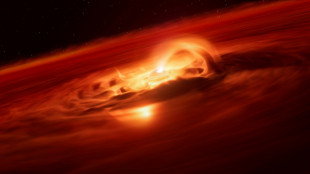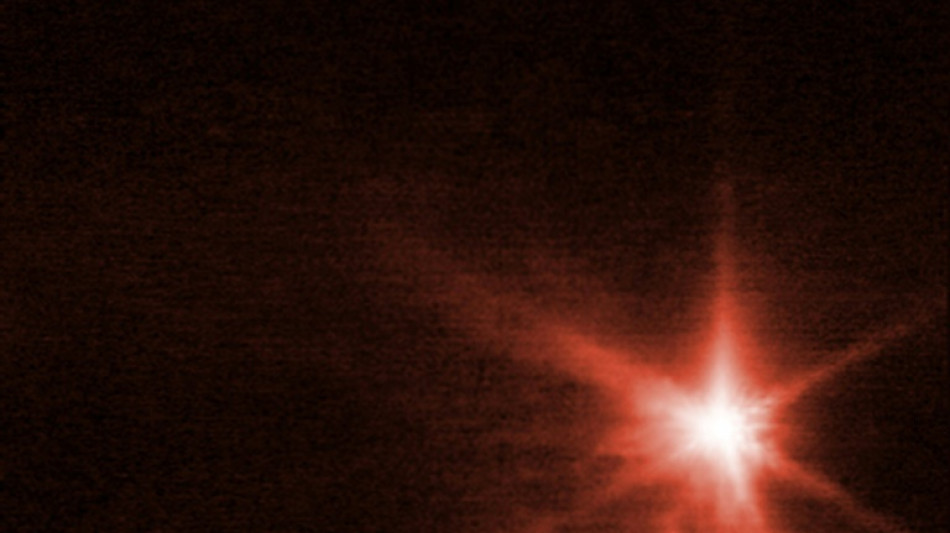
-
 Tokyo soars, yen sinks after Takaichi win on mixed day for Asia
Tokyo soars, yen sinks after Takaichi win on mixed day for Asia
-
China's chip challenge: the race to match US tech

-
 UN rights council to decide on creating Afghanistan probe
UN rights council to decide on creating Afghanistan probe
-
Indonesia sense World Cup chance as Asian qualifying reaches climax

-
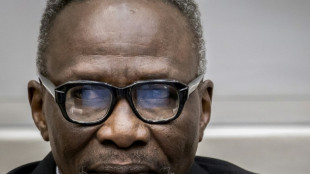 ICC to give war crimes verdict on Sudan militia chief
ICC to give war crimes verdict on Sudan militia chief
-
Matthieu Blazy to step out as Coco's heir in Chanel debut

-
 Only man to appeal in Gisele Pelicot case says not a 'rapist'
Only man to appeal in Gisele Pelicot case says not a 'rapist'
-
Appetite-regulating hormones in focus as first Nobel Prizes fall

-
 Gisele Pelicot: French rape survivor and global icon
Gisele Pelicot: French rape survivor and global icon
-
Negotiators due in Egypt for Gaza talks as Trump urges quick action

-
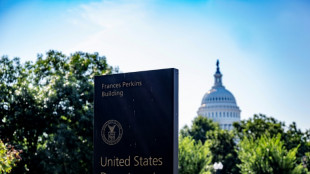 'My heart sank': Surging scams roil US job hunters
'My heart sank': Surging scams roil US job hunters
-
Competition heats up to challenge Nvidia's AI chip dominance

-
 UK police to get greater powers to restrict demos
UK police to get greater powers to restrict demos
-
Guerrero grand slam fuels Blue Jays in 13-7 rout of Yankees

-
 Five-try Bayonne stun champions Toulouse to go top in France
Five-try Bayonne stun champions Toulouse to go top in France
-
Fisk reels in Higgo to win maiden PGA Tour title in Mississippi
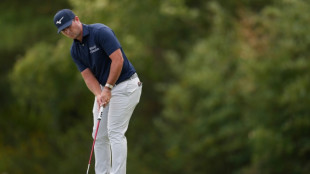
-
 Aces overpower Mercury for 2-0 lead in WNBA Finals
Aces overpower Mercury for 2-0 lead in WNBA Finals
-
Bayonne stun champions Toulouse to go top in France

-
 Greta Thunberg among Gaza flotilla detainees to leave Israel
Greta Thunberg among Gaza flotilla detainees to leave Israel
-
Atletico draw at Celta Vigo after Lenglet red card

-
 Ethan Mbappe returns to haunt PSG as Lille force draw with Ligue 1 leaders
Ethan Mbappe returns to haunt PSG as Lille force draw with Ligue 1 leaders
-
Hojlund fires Napoli into Serie A lead as AC Milan held at Juve

-
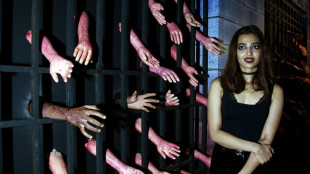 Vampires, blood and dance: Bollywood horror goes mainstream
Vampires, blood and dance: Bollywood horror goes mainstream
-
Broncos rally snaps Eagles unbeaten record, Ravens slump deepens

-
 Former NFL QB Sanchez charged after allegedly attacking truck driver
Former NFL QB Sanchez charged after allegedly attacking truck driver
-
France unveils new government amid political deadlock

-
 Child's play for Haaland as Man City star strikes again
Child's play for Haaland as Man City star strikes again
-
India crush Pakistan by 88 runs amid handshake snub, umpiring drama
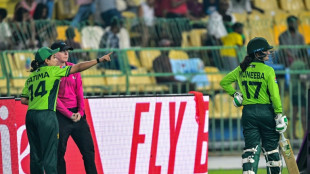
-
 Hojlund fires Napoli past Genoa and into Serie A lead
Hojlund fires Napoli past Genoa and into Serie A lead
-
Sevilla rout 'horrendous' Barca in Liga thrashing

-
 Haaland fires Man City to win at Brentford, Everton end Palace's unbeaten run
Haaland fires Man City to win at Brentford, Everton end Palace's unbeaten run
-
Haaland extends hot streak as Man City sink Brentford

-
 Italy working hard to prevent extra US tariffs on pasta
Italy working hard to prevent extra US tariffs on pasta
-
Sinner out of Shanghai Masters as Djokovic battles into last 16

-
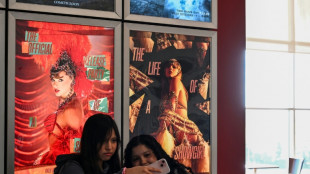 Swift rules N. America box office with 'Showgirl' event
Swift rules N. America box office with 'Showgirl' event
-
Ryder Cup hero MacIntyre wins Alfred Dunhill Links on home soil

-
 Republicans warn of pain ahead as US shutdown faces second week
Republicans warn of pain ahead as US shutdown faces second week
-
Sevilla rout champions Barca in shock Liga thrashing

-
 Norris-Piastri clash overshadows McLaren constructors' title win
Norris-Piastri clash overshadows McLaren constructors' title win
-
Trump administration declares US cities war zones

-
 Bad Bunny takes aim at Super Bowl backlash in 'SNL' host gig
Bad Bunny takes aim at Super Bowl backlash in 'SNL' host gig
-
El Khannouss fires Stuttgart into Bundesliga top four

-
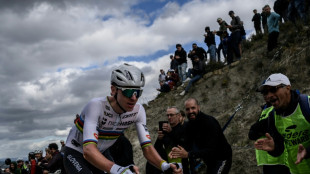 Insatiable Pogacar romps to European title
Insatiable Pogacar romps to European title
-
Newcastle inflict more pain on Postecoglou, Everton end Palace's unbeaten run

-
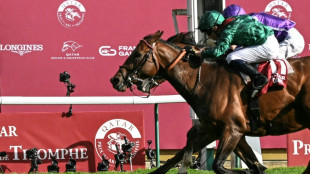 Daryz wins Prix de l'Arc de Triomphe thriller
Daryz wins Prix de l'Arc de Triomphe thriller
-
Russell wins Singapore GP as McLaren seal constructors' title

-
 Landslides and floods kill 64 in Nepal, India
Landslides and floods kill 64 in Nepal, India
-
Russell wins Singapore GP, McLaren seal constructors' title

-
 Djokovic 'hangs by rope' before battling into Shanghai last 16
Djokovic 'hangs by rope' before battling into Shanghai last 16
-
Erasmus proud of Boks' title triumph as Rugby Championship faces uncertain future


First images of asteroid strike from Webb, Hubble telescopes
The James Webb and Hubble telescopes on Thursday revealed their initial images of a spacecraft deliberately crashing into an asteroid, marking the first time the two most powerful space telescopes have observed the same celestial object.
The world's telescopes turned their gaze towards the space rock Dimorphos earlier this week for a historic test of Earth's ability to defend itself against a potential future life-threatening asteroid.
Astronomers rejoiced as NASA's Double Asteroid Redirection Test (DART) impactor slammed into its pyramid-sized target 11 million kilometres (6.8 million miles) from Earth on Monday night.
Images taken by Earth-bound telescopes showed a vast cloud of dust expanding out of Dimorphos -- and its big brother Didymos which it orbits -- after the spacecraft hit.
While those images showed matter spraying out over thousands of kilometres, the James Webb and Hubble images "zoom in much closer", said Alan Fitzsimmons, an astronomer at Queen's University Belfast involved in observations with the ATLAS project.
James Webb and Hubble can see "within just a few kilometres of the asteroids and you can really clearly see how the material is flying out from that explosive impact by DART", Fitzsimmons told AFP.
"It really is quite spectacular," he said.
Observations from the space telescopes will help reveal how much -- and how quickly -- matter sprayed from the asteroid, as well as the nature of its surface.
- 'A beautiful demonstration' -
An image taken by James Webb's Near-Infrared Camera (NIRCam) four hours after impact shows "plumes of material appearing as wisps streaming away from the centre of where the impact took place", according to a joint statement from the European Space Agency, James Webb and Hubble.
James Webb's images were shown in red because the telescope operates primarily in the infrared spectrum, which allows it to peer further into the universe than ever before.
The images from Hubble's Wide Field Camera 3 were blue because it shows the impact on visible light.
Hubble images from 22 minutes, five hours and eight hours after impact show the expanding spray of matter from where DART hit on the asteroid's left.
The true measure of DART's success will be exactly how much it diverted the asteroid's trajectory, so the world can start preparing to defend itself against bigger asteroids that could head our way in the future.
However, it will take Earth-bound telescopes and radar days or even weeks to work out exactly where Dimorphos is, compared to where it would have been.
Measurements using that data will probably start next week, Fitzsimmons said.
"The problem we have at the moment is that there's still a lot of dust and debris around the asteroids," he said.
"How quickly astronomers can make that measurement will depend on exactly how efficient DART was," he added. The more the asteroid has been knocked off course, the easier it will be to measure.
Since launching in December and releasing its first images in July, James Webb has taken the title of most powerful space telescope from Hubble.
With astronomers lined up for precious time to peer into the universe, the DART test is the first time both telescopes have observed the same event.
Fitzsimmons said the images were "a beautiful demonstration of the extra science you can get by using more than one telescope simultaneously".
N.Fournier--BTB


